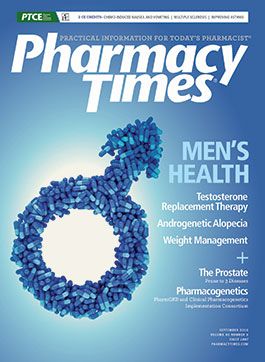Publication
Article
Pharmacy Times
Legal Duty to Preserve Evidence of a Dispensing Error?
Author(s):
When the spouse of a patient discovers 2 dosage forms with different appearances in the same medication vial and returns them to the pharmacy, is there a legal duty to preserve the vial and its contents as potential evidence in a yet-to-be-filed malpractice case?
ISSUE OF THE CASE
When the spouse of a patient discovers 2 dosage forms with different appearances in the same medication vial and, suspecting a dispensing error, returns them to the pharmacy, where an incident report is completed and submitted, is there a legal duty to preserve the vial and its contents as potential evidence in a yet-to-be-filed malpractice case?
FACTS OF THE CASE
A prescription for valsartan was presented at a chain pharmacy in a western state. Something went awry, and the vial given to the patient contained valsartan tablets and lithium capsules, medications that have the same color but different shapes. Instructed to take 1 unit of medication per day, the patient consumed as much as 1 lithium capsule for 5 days before his spouse noticed the inconsistent appearance of the contents of the vial. The spouse returned the vial and its contents to the pharmacy, where the pharmacist verified the erroneous lithium in the container by checking its appearance in the pharmacy’s computer database.
The patient began to experience weakness and numbness in his left hand, so he went to an emergency department, the records of which stated that the patient had potentially consumed one 300-mg lithium capsule per day for 5 days. This eventually led to referral to a hand specialist, who performed surgery on the patient.
Slightly more than a year after the prescription had been dispensed, the patient filed suit against the pharmacy chain. As part of the pretrial process of discovery, in which each side has the opportunity to request information from the other to assess what is at issue and the strength of the other side’s case, the patient/plaintiff requested copies of the chain’s policies covering erroneously dispensed prescriptions and handling of returned medications. The chain was requested to turn over the vial and its contents so the plaintiff could have the medications tested. At that point, the defendant/pharmacy notified the plaintiff that the container and its contents had been destroyed pursuant to company policy.
In response, the plaintiff/patient submitted a motion to the court for sanctions, most likely monetary, to be applied to the defendant/pharmacy for what is known legally as “spoliation of evidence.” Spoliation includes destruction or significant alteration of evidence, or the failure to preserve property for use by another as evidence for pending or reasonably foreseeable litigation.
THE COURT’S RULING
The trial court judge denied the plaintiff’s motion seeking sanctions against the defendant pharmacy.
THE COURT’S REASONING
As a point of departure, the court started with the general rule that “a party to a lawsuit must preserve evidence it knows or should know is relevant to a claim or defense of any party, or that may lead to the discovery of relevant evidence.” So, a key portion of that is the notice on the part of the person destroying the item that the thing is potentially relevant to litigation and that knowledge must exist before the thing was destroyed.
The court looked at the internal operating policies of the pharmacy chain. If the potential evidence was destroyed according to the firm’s policies and the defendant doing the destruction had no notice of the potential relevance of the evidence in future litigation, the requirements of spoliation have not been met.
The court concluded that the operating policies had indeed been followed. However, another policy that also was followed was that the firm notified its insurance company of a potential claim when the incident report was submitted. That clearly indicated that the defendant pharmacy was on notice of a potential lawsuit.
The court also looked at whether the alleged spoliation was prejudicial to the plaintiff/patient. In this instance, the court reviewed the evidence available to the plaintiff indicating what medication was erroneously in the bottle, and the maximum amount consumed by the patient. This came from the patient’s medical records, the pharmacy firm’s admissions during depositions, and the testimony of the pharmacist who received the vial from the spouse. All that taken together was sufficient to support the defendant’s case; having the actual container and contents would not add anything more of value.
Emphasizing that the decision to impose sanctions for failing to preserve evidence is discretionary with the court, the judge concluded that the plaintiff/patient had all the information necessary to proceed. The application of sanctions for spoliation was not appropriate in this situation.
Dr. Fink is a professor of pharmacy law and policy and the Kentucky Pharmacists Association Endowed Professor of Leadership at the University of Kentucky College of Pharmacy, Lexington.







